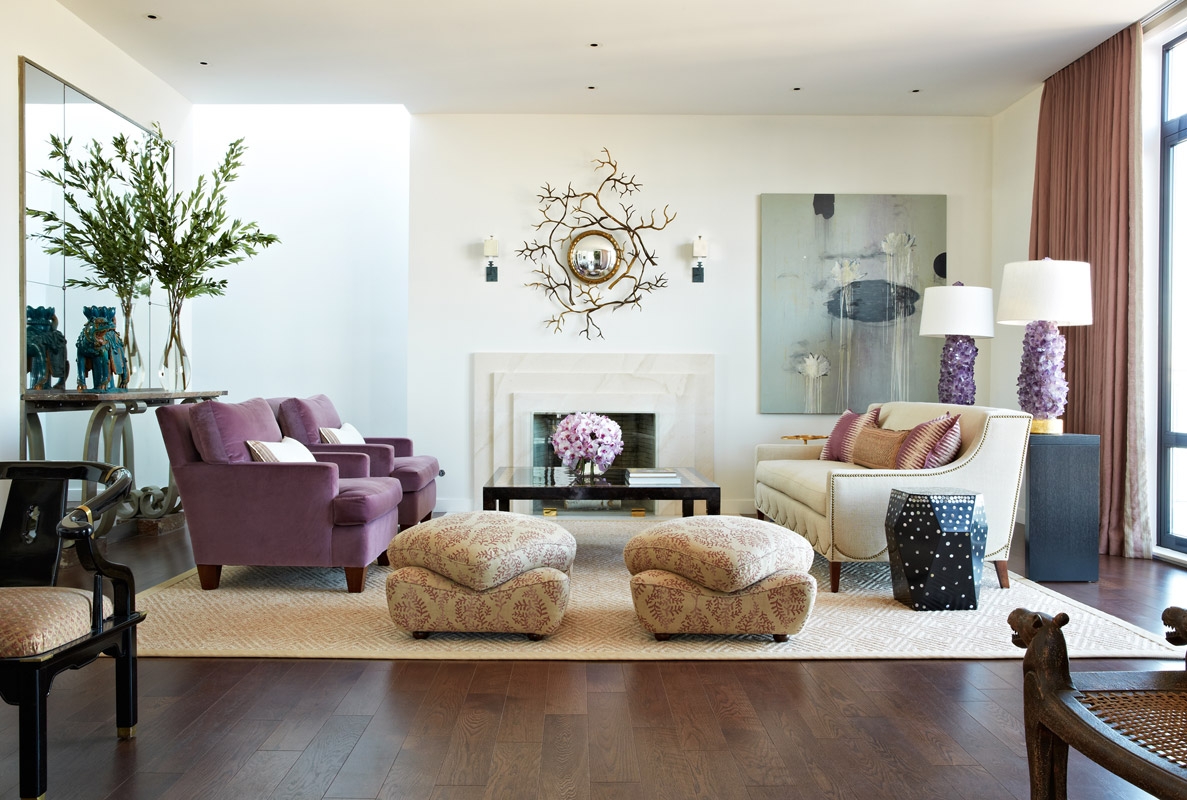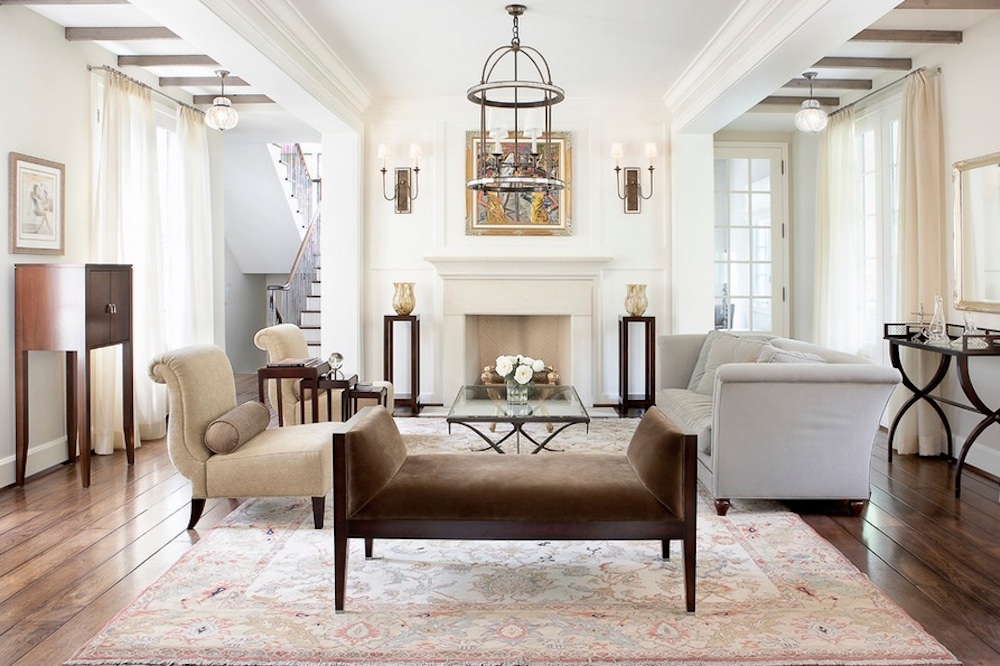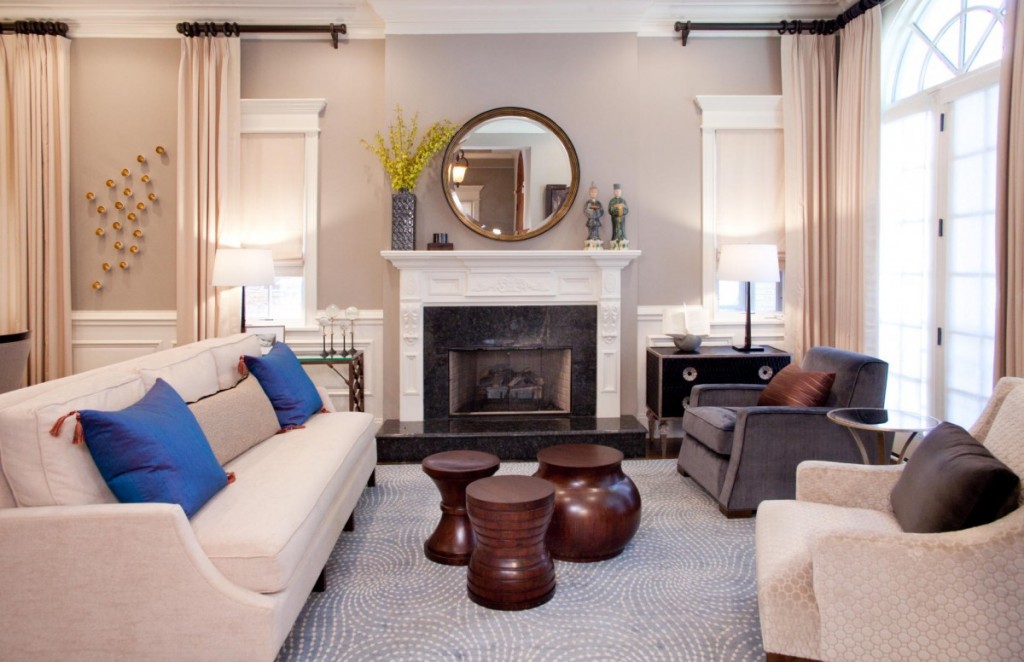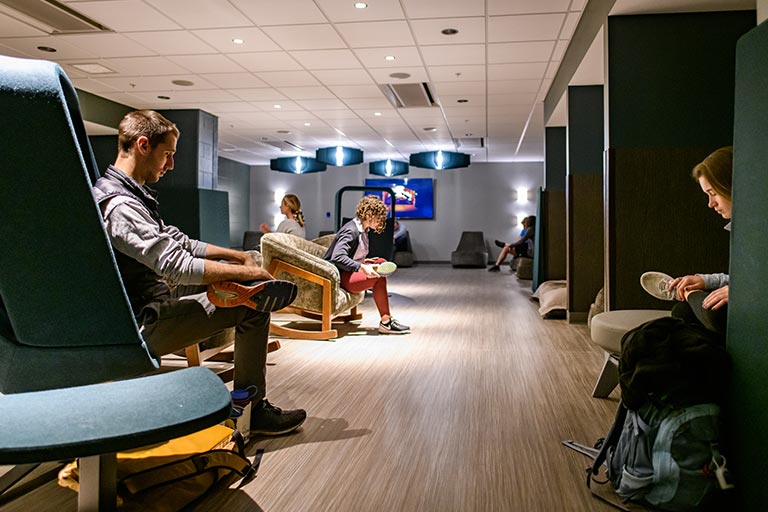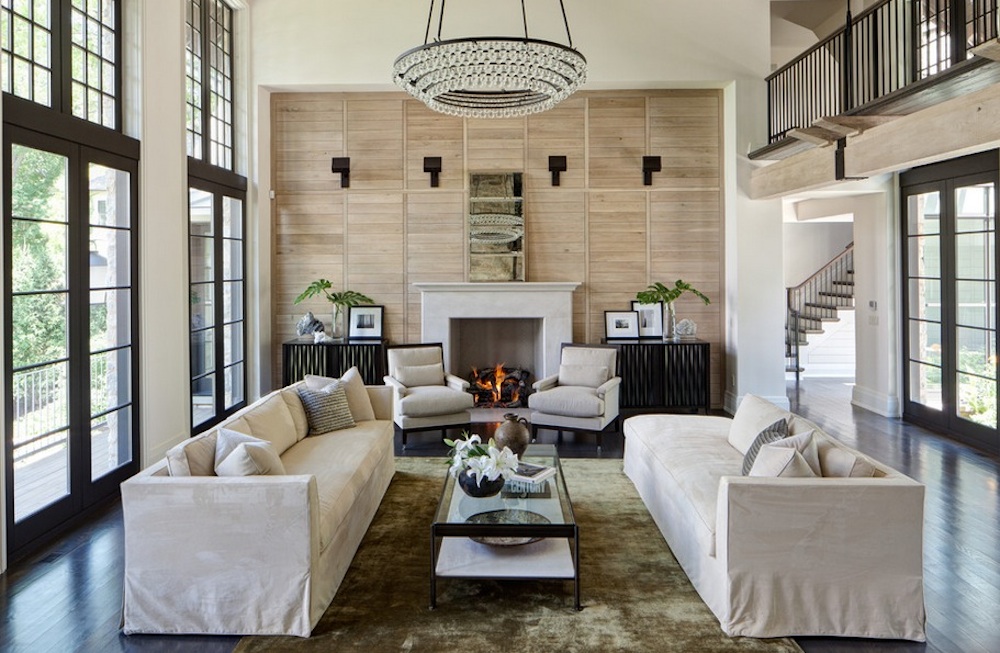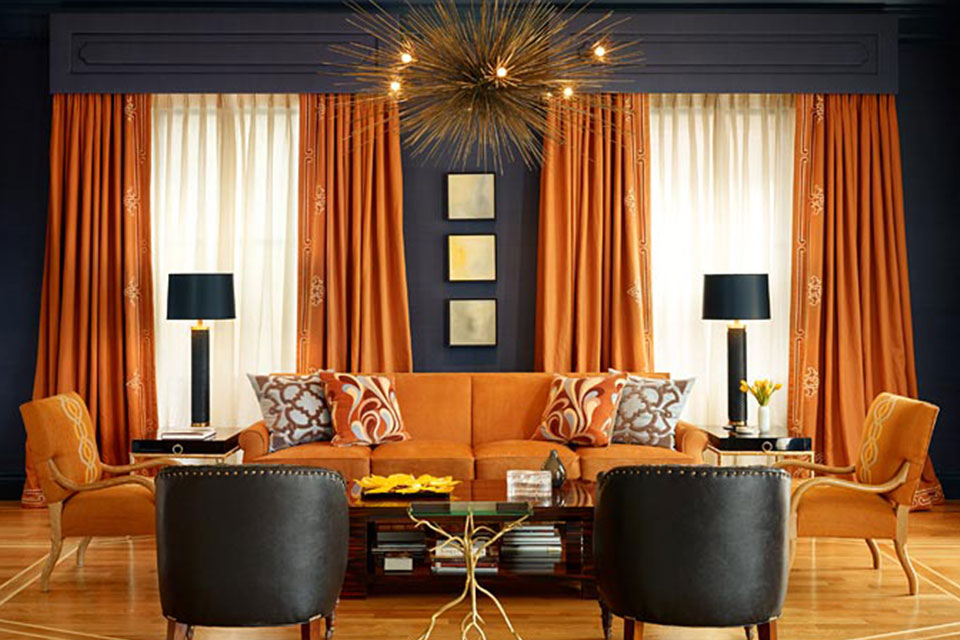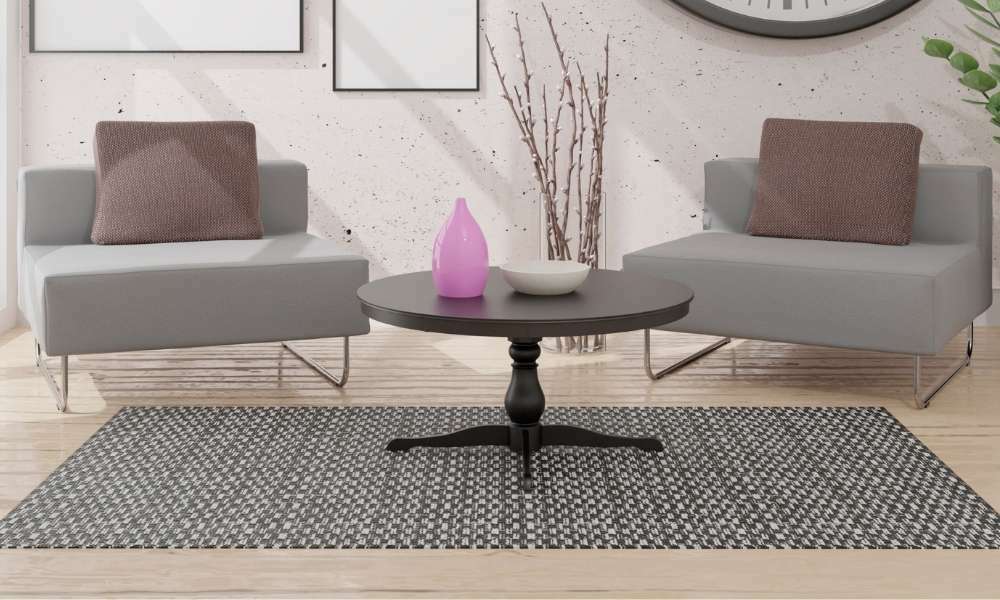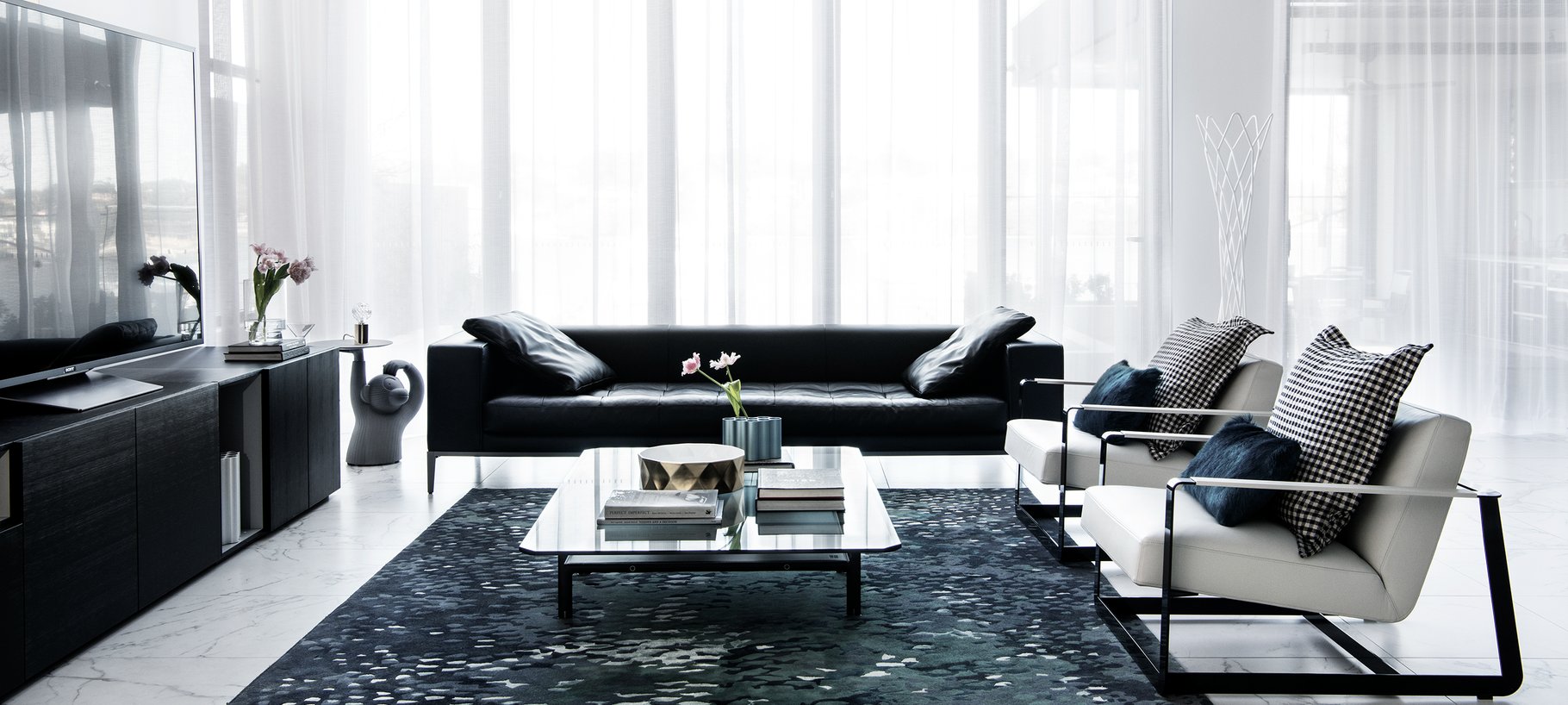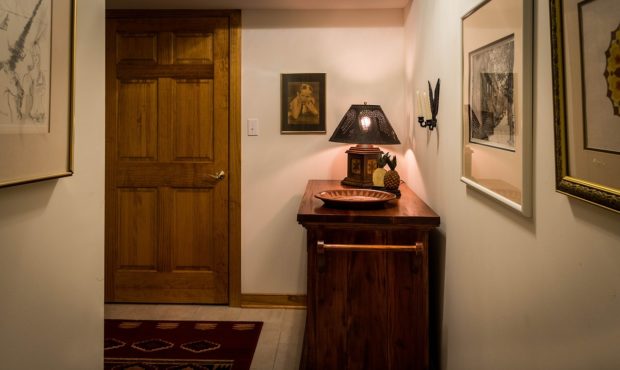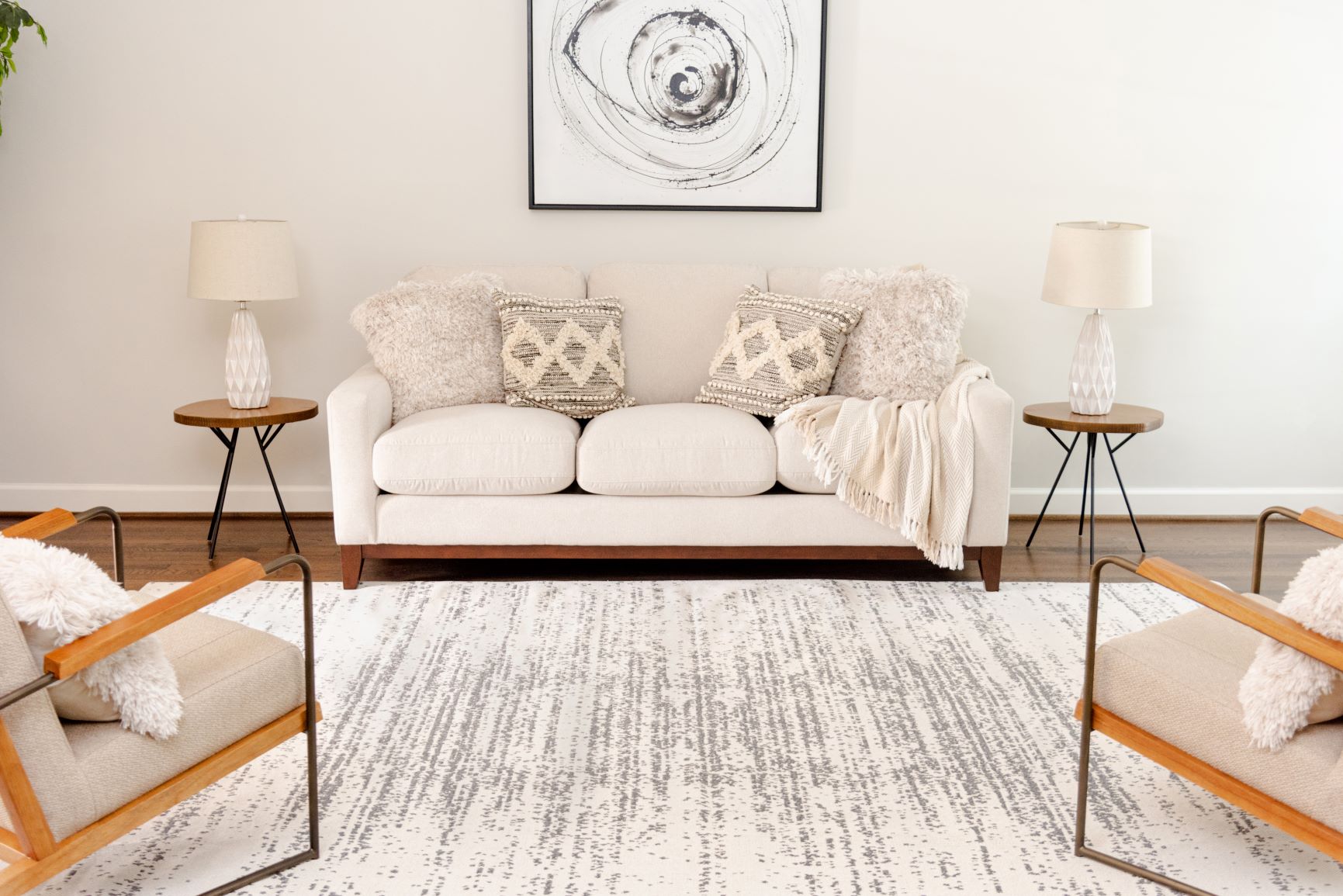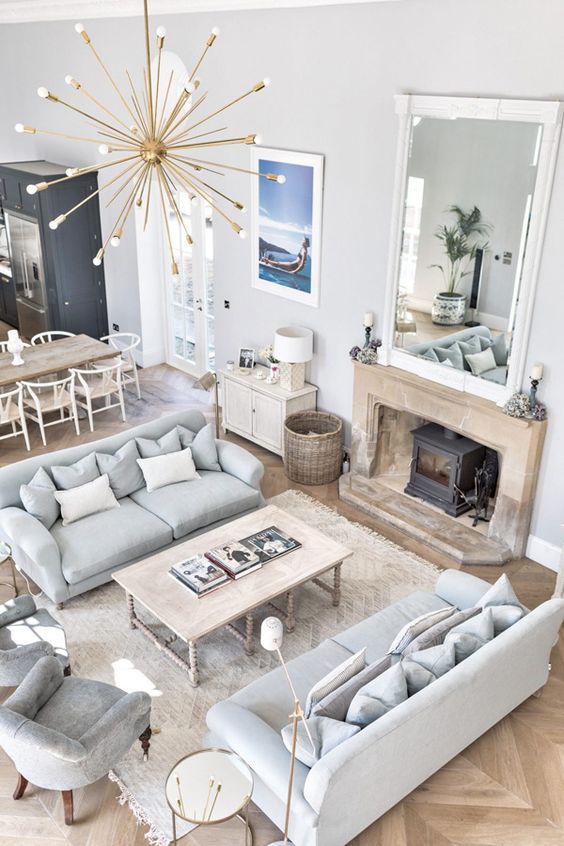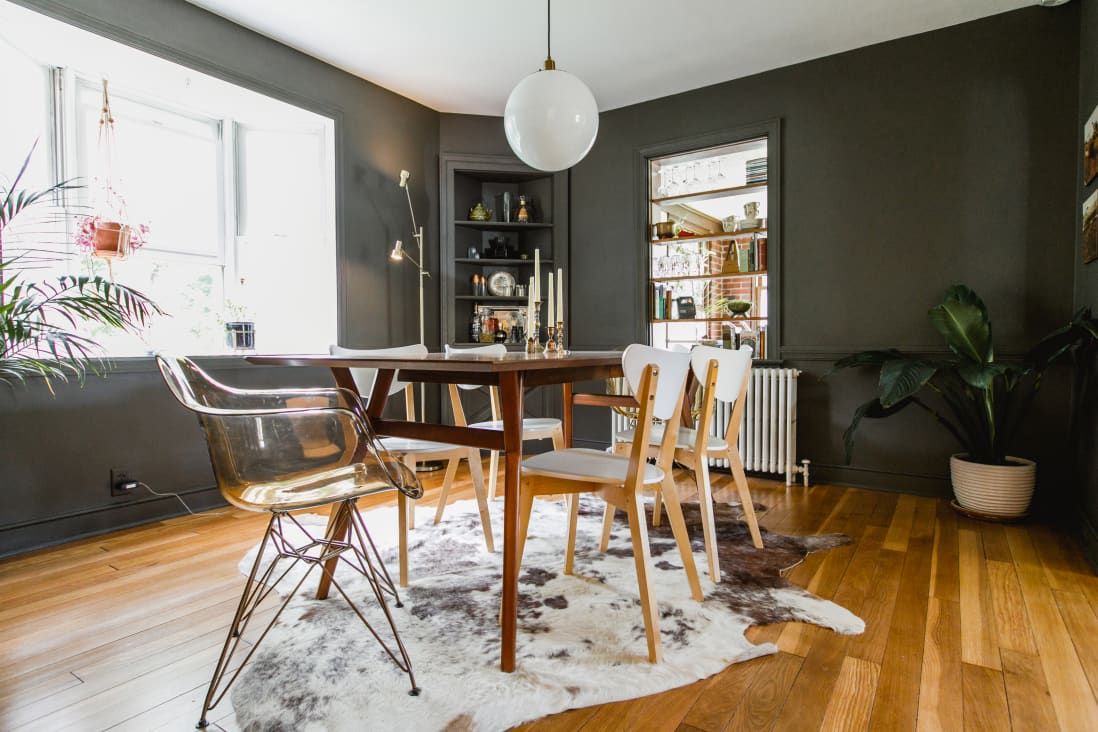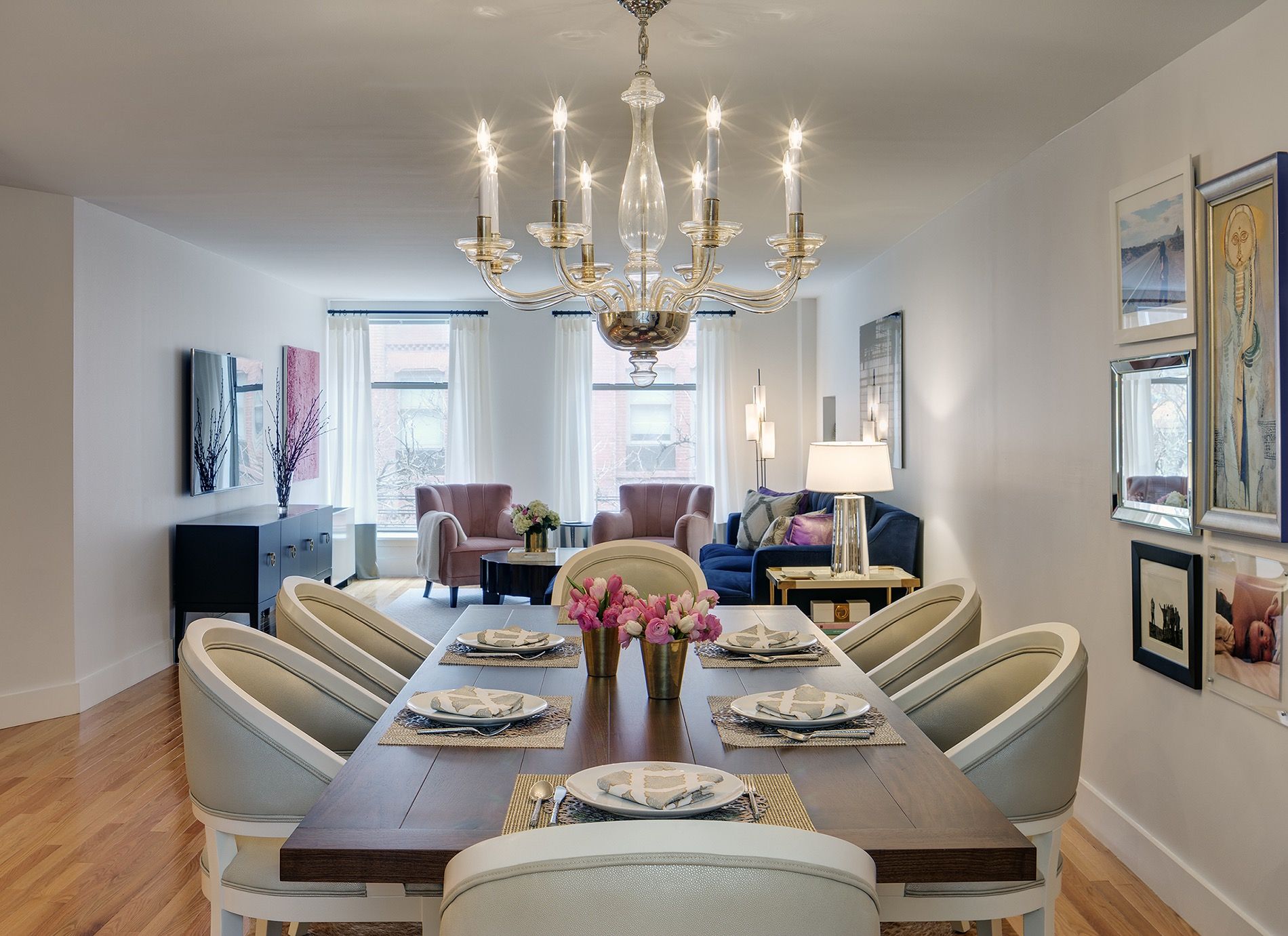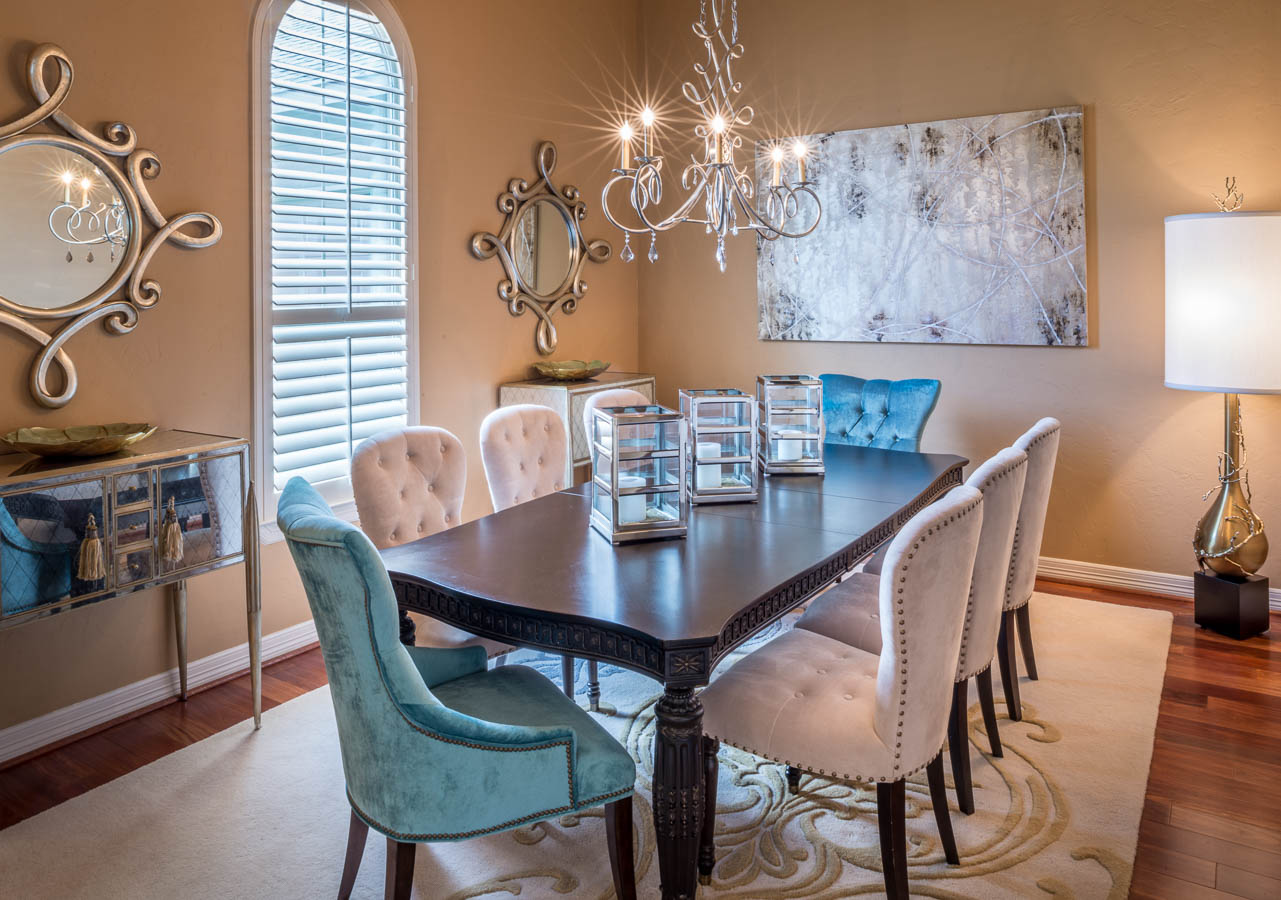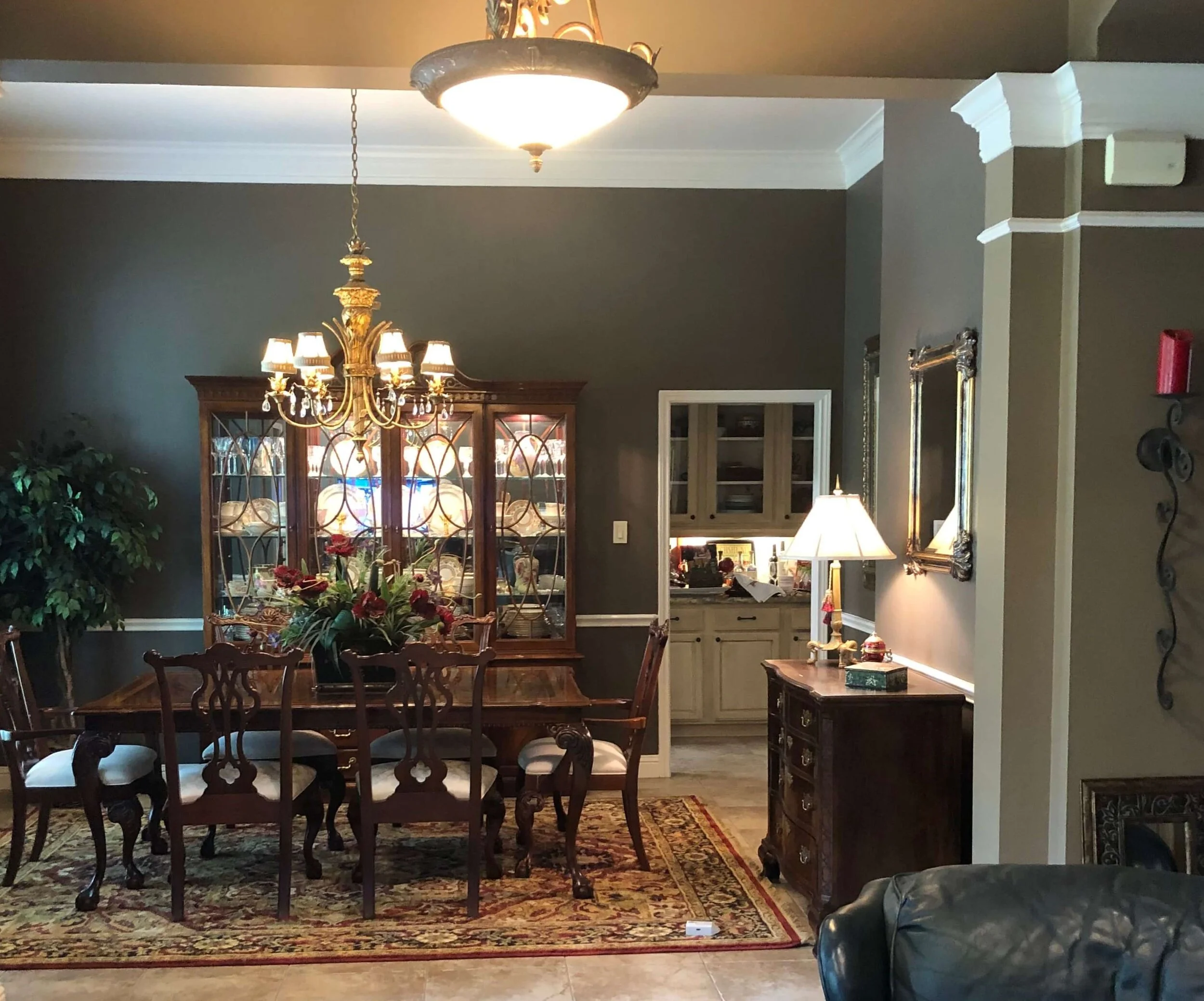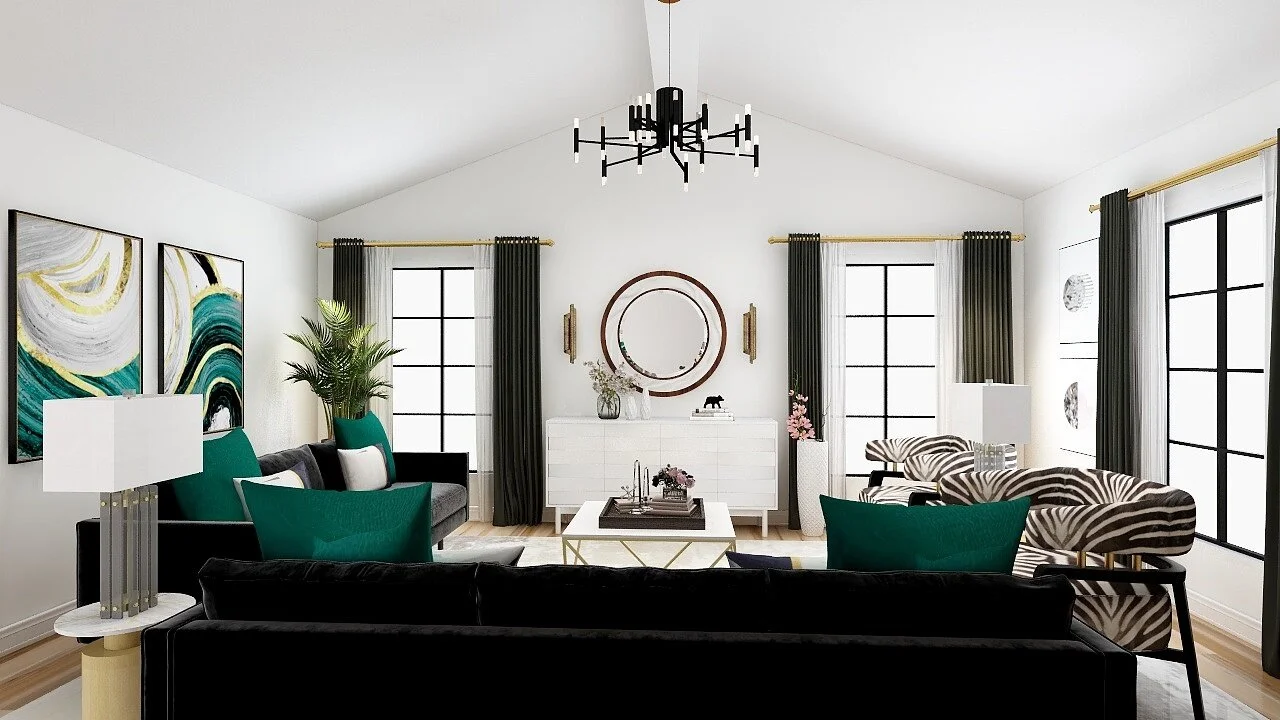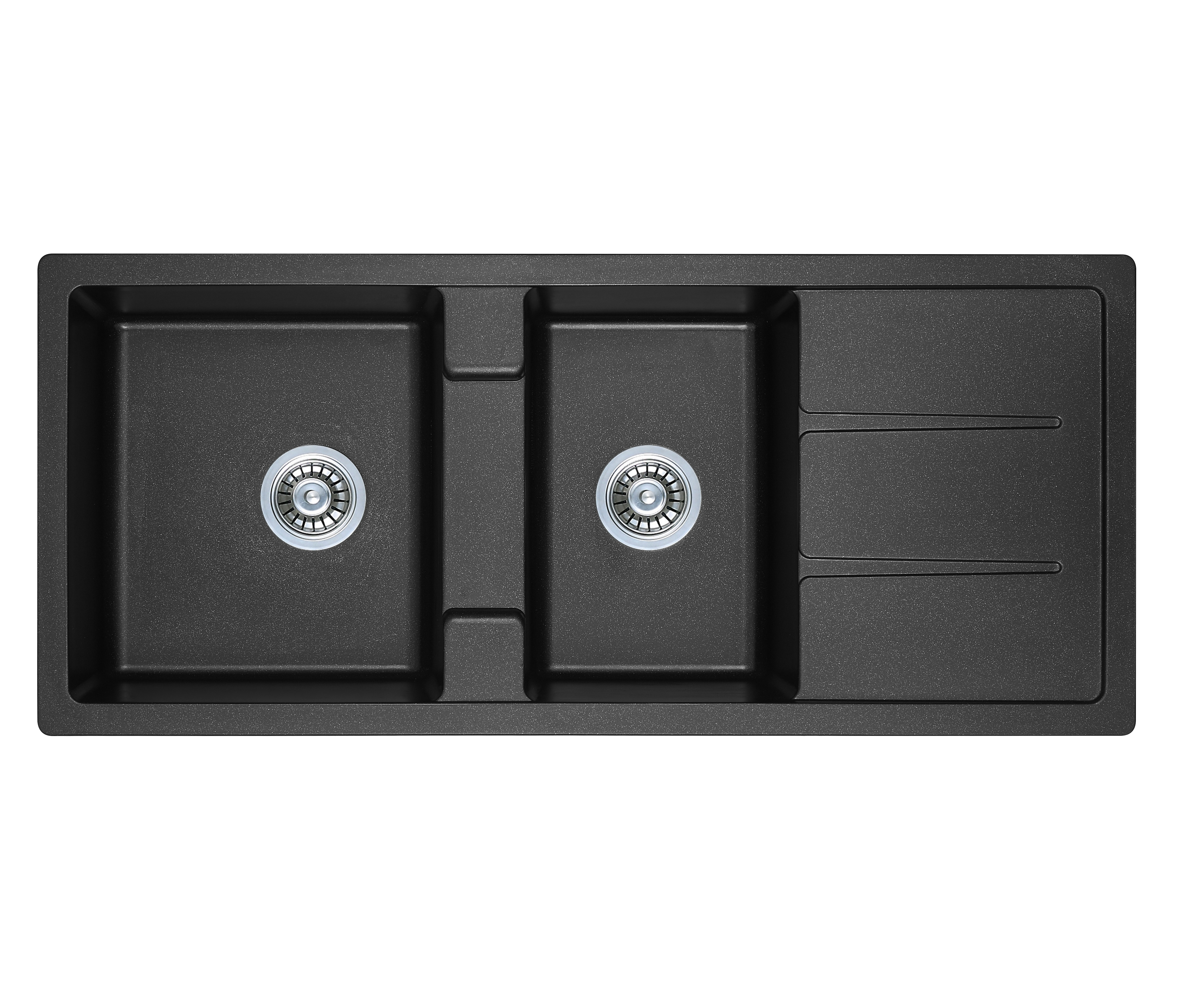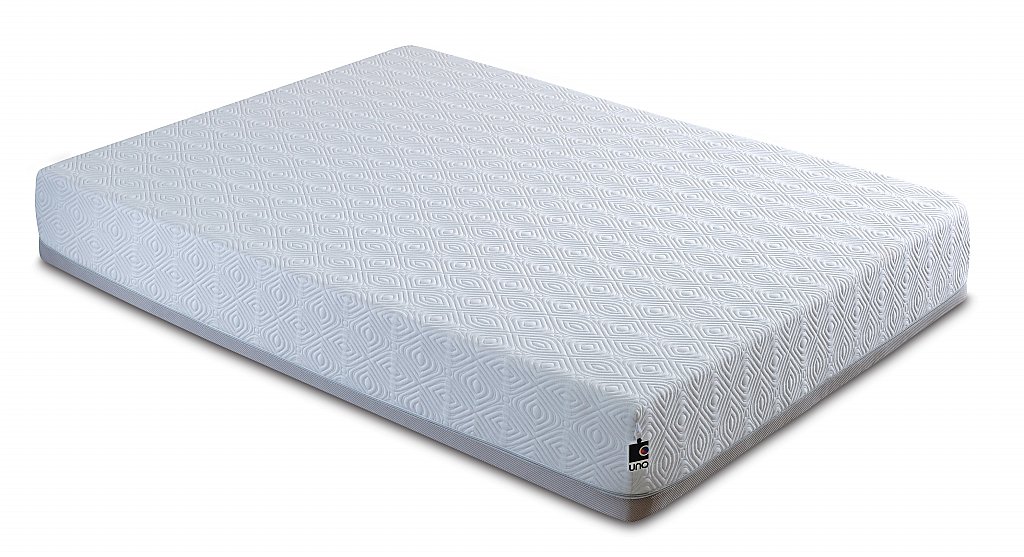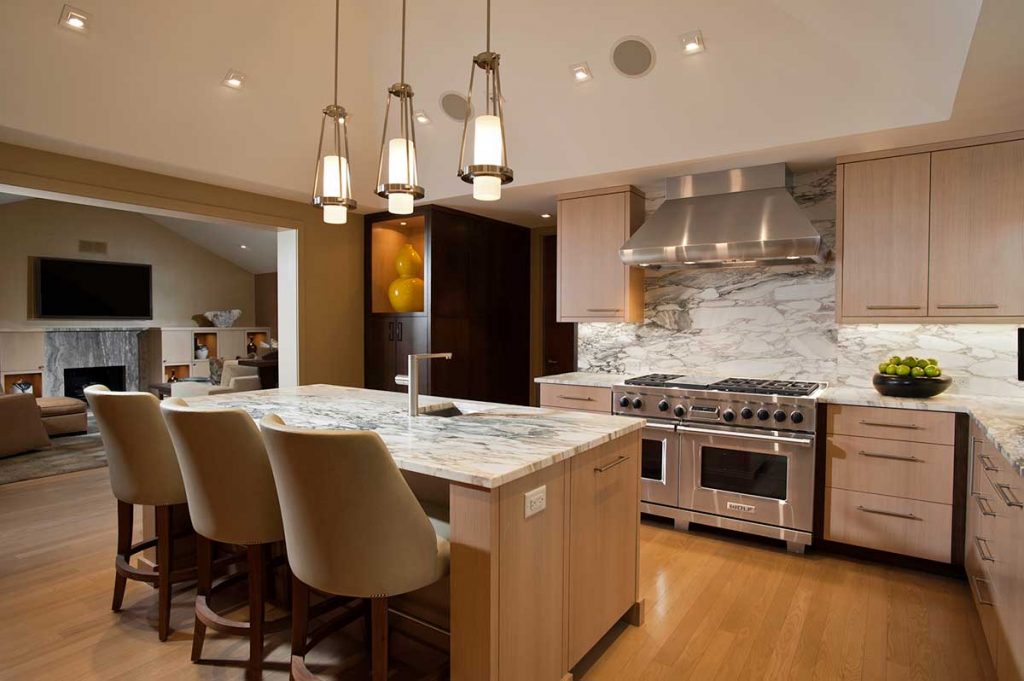The placement of your dining room table can make or break the overall look and flow of your dining room. A table that is not centered can throw off the balance of the room and make it feel awkward. But don't worry, there are simple ways to fix this issue and create a cohesive and inviting dining space. Here are 5 tips to help you get your dining room table placement just right. Dining Room Table Placement: How to Get it Right | 5 Tips
If your dining room table is not centered, the first step is to determine the cause. Is the table itself not centered or is it the entire room that is off-balance? If it's the table, try shifting it a few inches in the direction that it needs to be centered. You can also use a measuring tape to ensure that the table is equidistant from the walls on each side. If the issue is with the room, you may need to rearrange the furniture to create a more balanced layout. How to Fix a Dining Room Table That is Not Centered
When placing a dining room table, it's important to consider the size and shape of the room. A rectangular table works best in a long and narrow room, while a round table is more suitable for a square or smaller space. To ensure that your table is centered, measure the length and width of the room and then find the center point. Use this as a guide for placing your table in the center of the room. How to Measure and Place a Dining Room Table
The placement of your dining room table is not the only factor that affects the balance of the room. The positioning of other furniture, such as chairs and a buffet table, also plays a role. When arranging furniture, make sure that there is enough space for people to comfortably move around the table and that the room feels open and inviting. Avoid placing furniture too close to walls as this can make the room feel cramped. How to Arrange Furniture in a Dining Room
Once your dining room table is perfectly centered, it's time to decorate it. A centerpiece is a great way to add visual interest and create a focal point in the room. You can use a vase of fresh flowers, a bowl of fruit, or even a statement candle holder as your centerpiece. Just make sure that it is not too tall or wide so that it doesn't obstruct the view of people sitting at the table. How to Decorate a Dining Room Table
A well-decorated dining room table can serve as a focal point in the room. But if your table is not centered, it can be difficult to achieve this effect. To create a focal point, you can use a rug underneath the table to draw attention to it. A colorful or patterned rug can also add visual interest to the room and make it feel more cohesive. How to Create a Focal Point in a Dining Room
Balance is key when it comes to creating a harmonious dining room. If your table is not centered, it can throw off the balance and make the room feel off-kilter. To create balance, make sure that the furniture on one side of the room is mirrored on the other. This includes chairs, lighting, and decorative elements. This will help to create a sense of symmetry and balance in the room. How to Balance a Room
In an open-concept dining room, using a rug can help to define the dining space and make it feel separate from the rest of the room. To ensure that your dining room table is centered on the rug, measure the size of the rug and then place it accordingly. This will not only help with balance, but it will also add texture and warmth to the room. How to Use Rugs to Define Spaces
A dining room table that is not centered can disrupt the overall flow of the room and make it feel disjointed. To create a cohesive look, incorporate similar colors, patterns, and textures throughout the room. This will tie everything together and make the table placement less noticeable. You can also use complementary decor pieces, such as artwork and curtains, to create a cohesive and visually appealing space. How to Create a Cohesive Look in Your Dining Room
If you have a small dining room, a table that is not centered can make the space feel even smaller. To give the illusion of more space, use a round table instead of a rectangular one. Round tables take up less floor space and can make the room feel more open and airy. You can also use mirrors on the walls to reflect light and make the room appear larger. How to Make a Small Dining Room Look Bigger
The Importance of a Properly Centered Dining Room Table in House Design
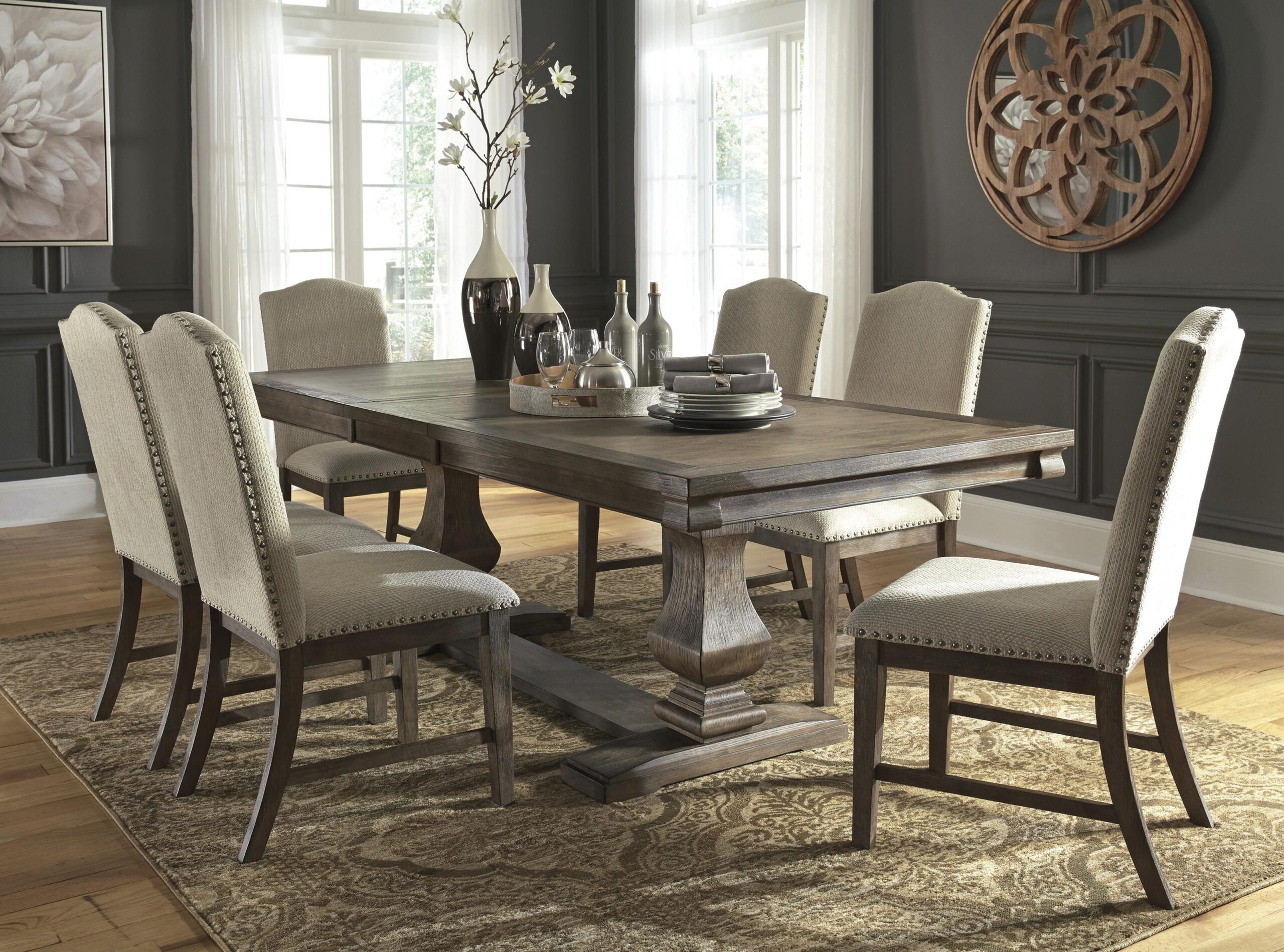
Why a Dining Room Table Should Be the Centerpiece of Your House Design
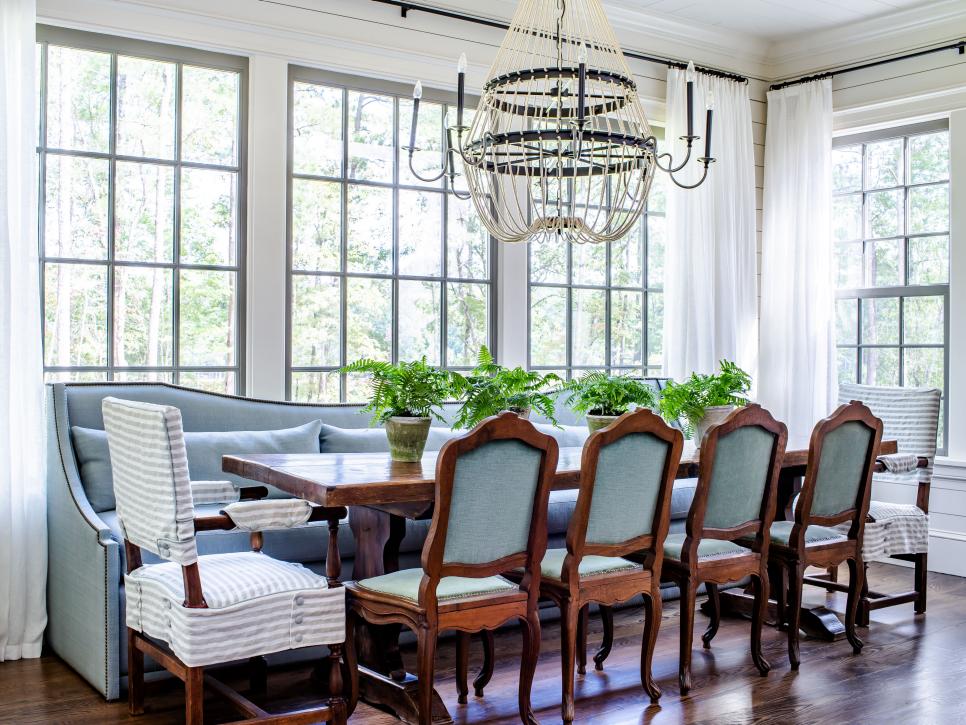 When it comes to designing the perfect home, every detail matters. From the color of the walls to the placement of furniture, each element plays a crucial role in creating a cohesive and visually appealing space. One often overlooked aspect of house design is the positioning of the dining room table. Many homeowners may not realize the impact that a correctly centered dining room table can have on the overall look and feel of their home.
A dining room table is not just a functional piece of furniture, but it also serves as the centerpiece of the dining room and can set the tone for the entire house.
Whether you are entertaining guests or simply enjoying a family dinner, the dining table is where people come together to share a meal and create lasting memories. Therefore, it is essential to pay attention to its placement in the room.
When it comes to designing the perfect home, every detail matters. From the color of the walls to the placement of furniture, each element plays a crucial role in creating a cohesive and visually appealing space. One often overlooked aspect of house design is the positioning of the dining room table. Many homeowners may not realize the impact that a correctly centered dining room table can have on the overall look and feel of their home.
A dining room table is not just a functional piece of furniture, but it also serves as the centerpiece of the dining room and can set the tone for the entire house.
Whether you are entertaining guests or simply enjoying a family dinner, the dining table is where people come together to share a meal and create lasting memories. Therefore, it is essential to pay attention to its placement in the room.
The Benefits of a Properly Centered Dining Room Table
How to Center Your Dining Room Table
:max_bytes(150000):strip_icc()/fin-1-a-m-fixture-5a5159cb7bb28300375aa997.jpg) There are a few key factors to keep in mind when centering your dining room table:
-
Consider the size and shape of the room:
The size and shape of your dining room will play a significant role in determining the best placement for your table. For smaller rooms, placing the table in the center may not be possible, but it can still be positioned to create balance and flow.
-
Take into account other furniture and decor:
If you have a chandelier or other statement piece above your dining room table, it should be centered above the table. Also, consider the placement of other furniture in the room, such as a buffet or sideboard, and make sure they are not obstructing the flow or making the room feel cramped.
-
Consider the shape and size of the dining table:
Different shapes and sizes of dining tables may require different placements in the room. For example, a round table may look best centered in the middle of the room, while a rectangular table may look better pushed up against a wall.
There are a few key factors to keep in mind when centering your dining room table:
-
Consider the size and shape of the room:
The size and shape of your dining room will play a significant role in determining the best placement for your table. For smaller rooms, placing the table in the center may not be possible, but it can still be positioned to create balance and flow.
-
Take into account other furniture and decor:
If you have a chandelier or other statement piece above your dining room table, it should be centered above the table. Also, consider the placement of other furniture in the room, such as a buffet or sideboard, and make sure they are not obstructing the flow or making the room feel cramped.
-
Consider the shape and size of the dining table:
Different shapes and sizes of dining tables may require different placements in the room. For example, a round table may look best centered in the middle of the room, while a rectangular table may look better pushed up against a wall.
In Conclusion
 The dining room table is a crucial element in any house design, and properly centering it can have a significant impact on the overall look and feel of the space.
By taking into consideration the size and shape of the room, other furniture and decor, and the dining table itself, you can create a beautiful and functional dining room that brings people together and sets the tone for your entire home. So next time you are rearranging your furniture, don't forget to give your dining room table the attention it deserves.
The dining room table is a crucial element in any house design, and properly centering it can have a significant impact on the overall look and feel of the space.
By taking into consideration the size and shape of the room, other furniture and decor, and the dining table itself, you can create a beautiful and functional dining room that brings people together and sets the tone for your entire home. So next time you are rearranging your furniture, don't forget to give your dining room table the attention it deserves.


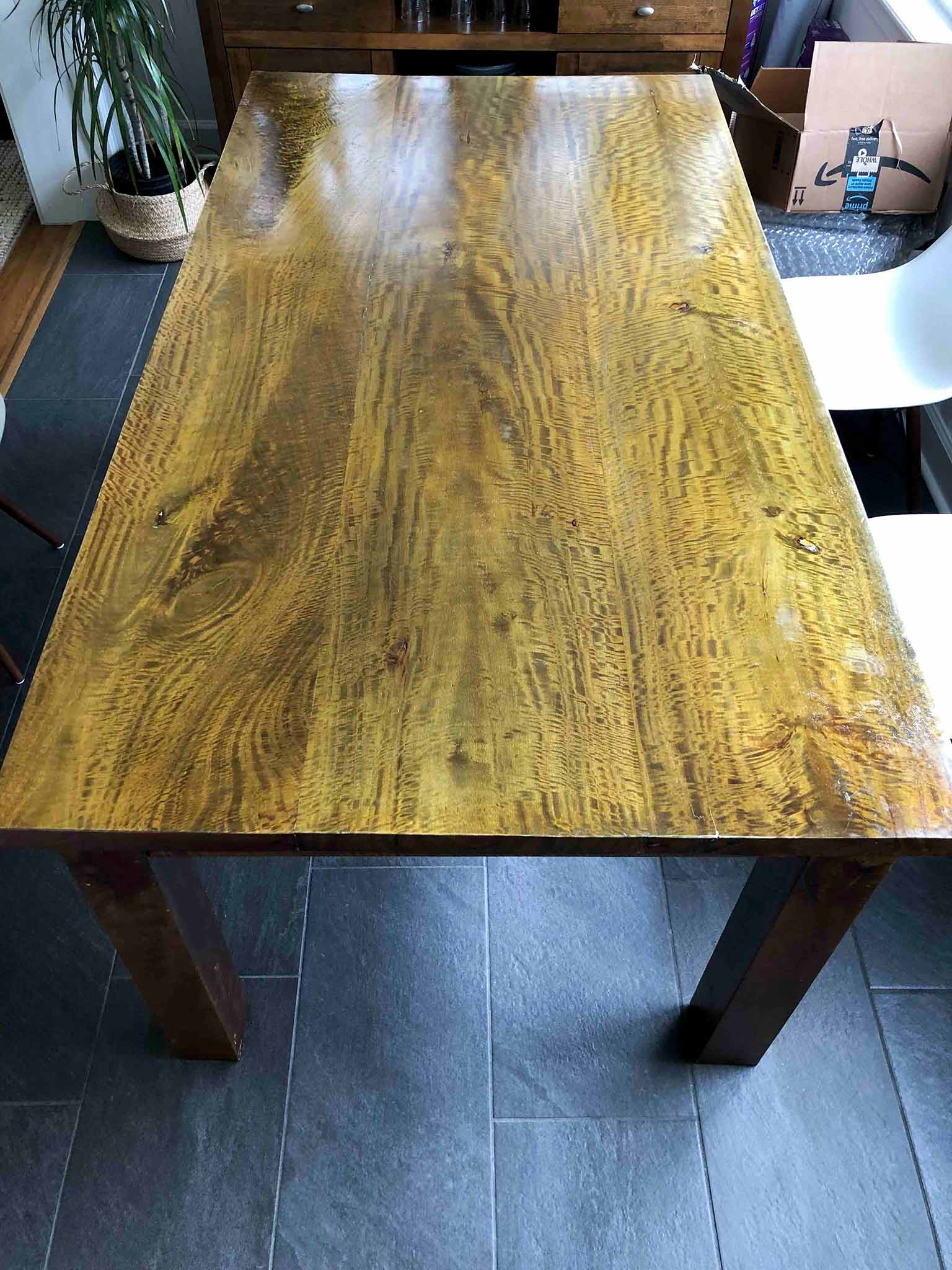





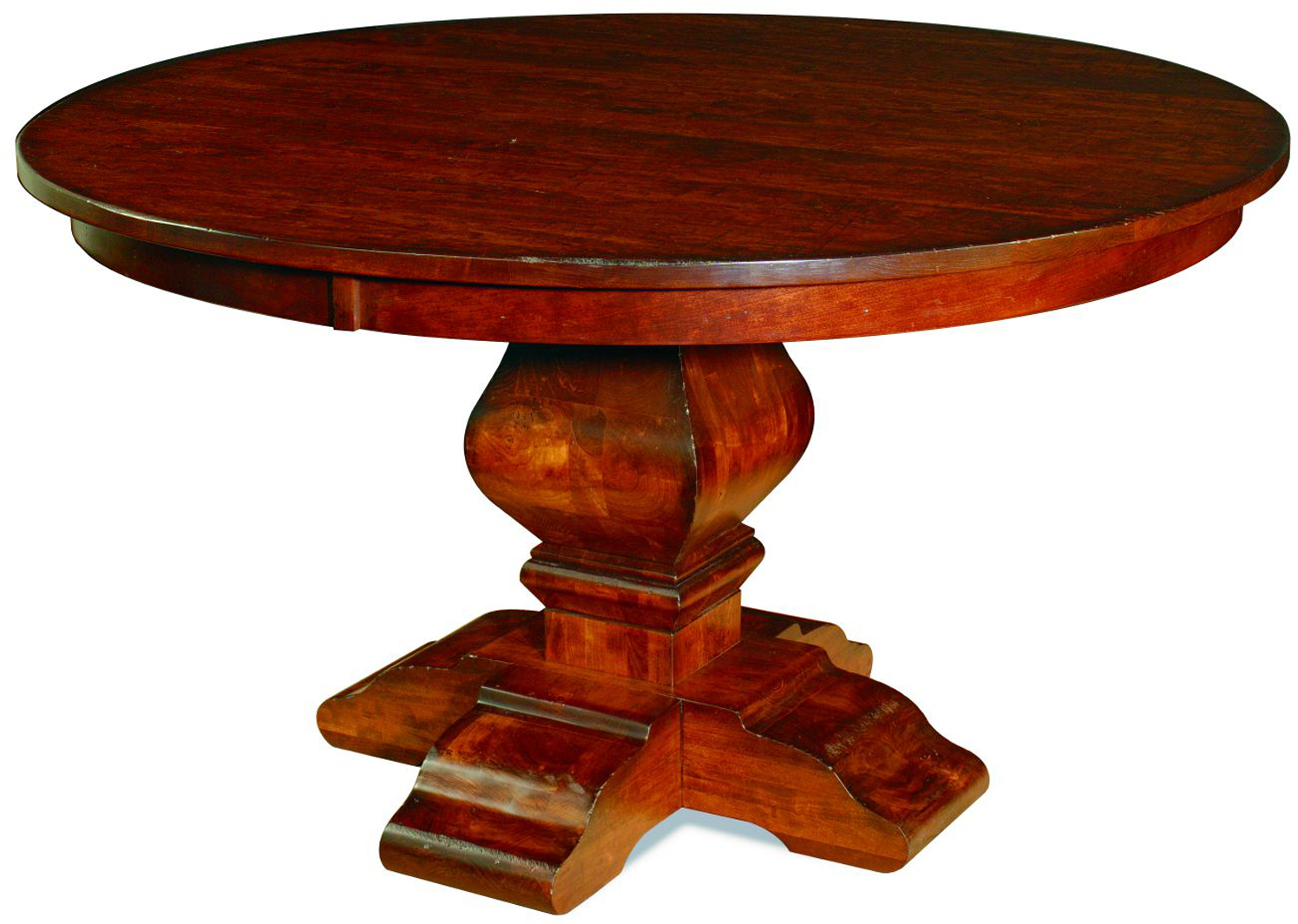





























:max_bytes(150000):strip_icc()/standard-measurements-for-dining-table-1391316-FINAL-5bd9c9b84cedfd00266fe387.png)
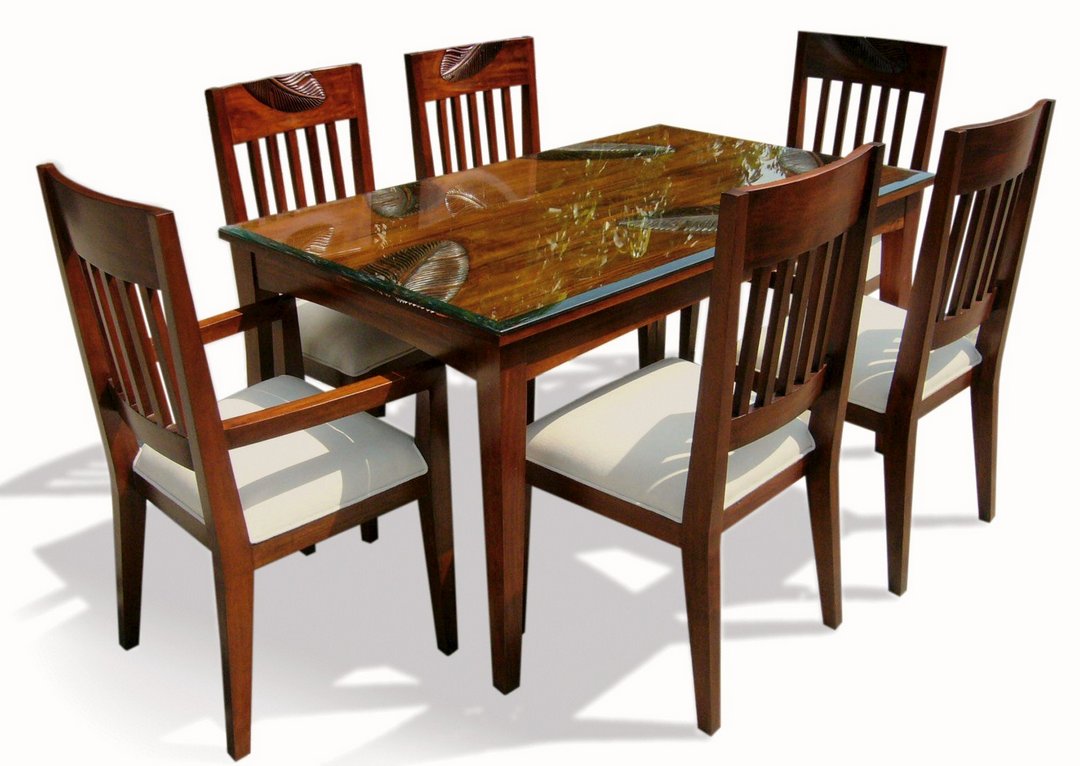



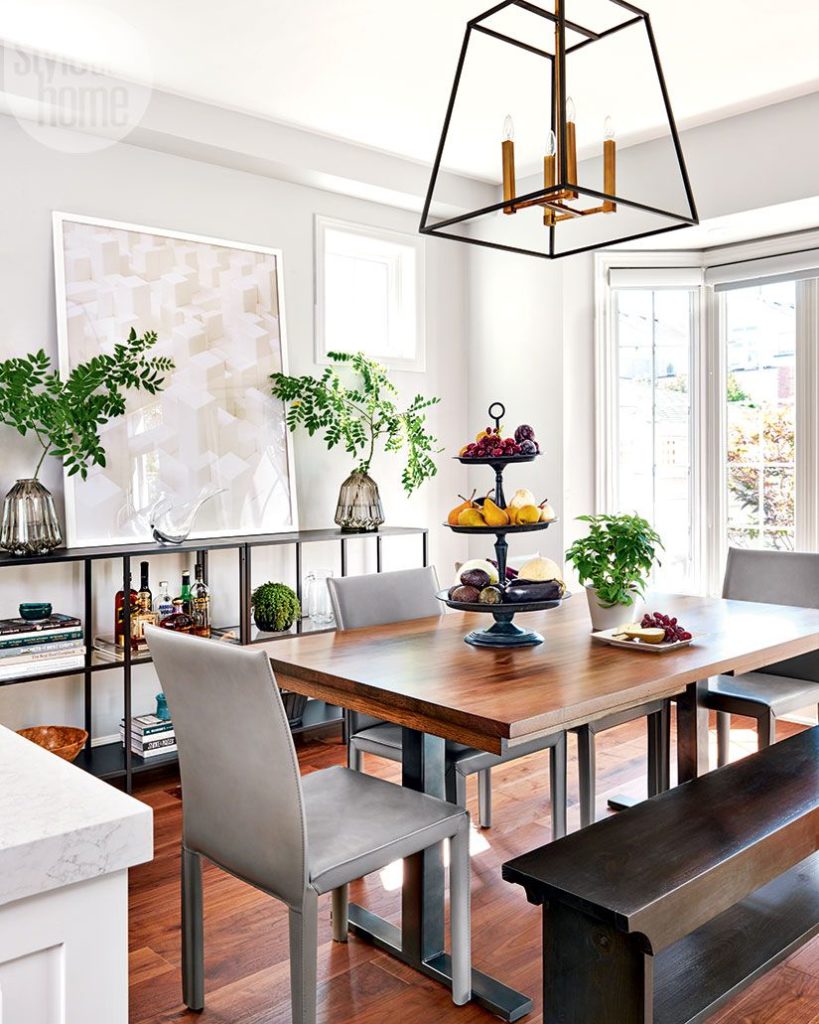
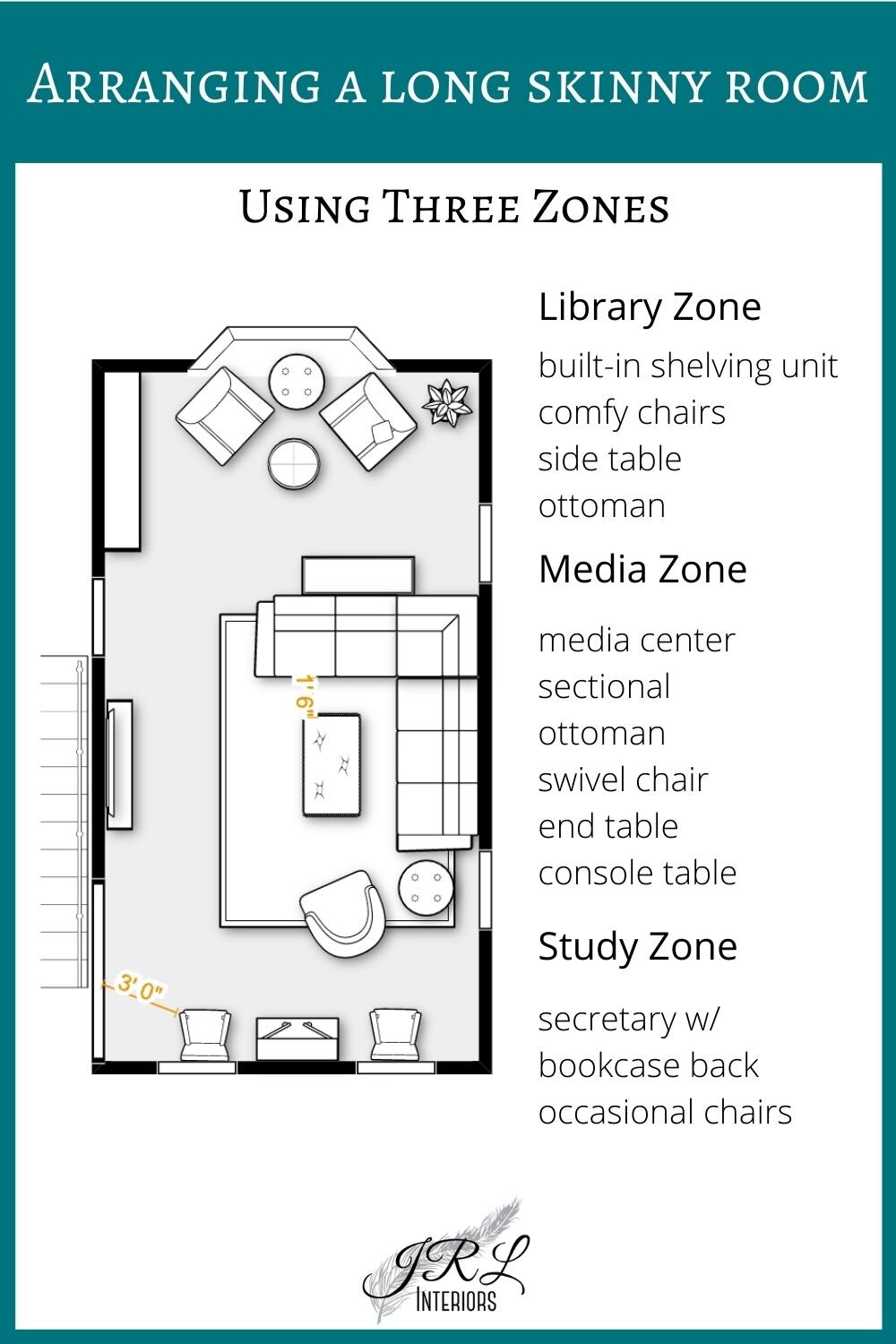

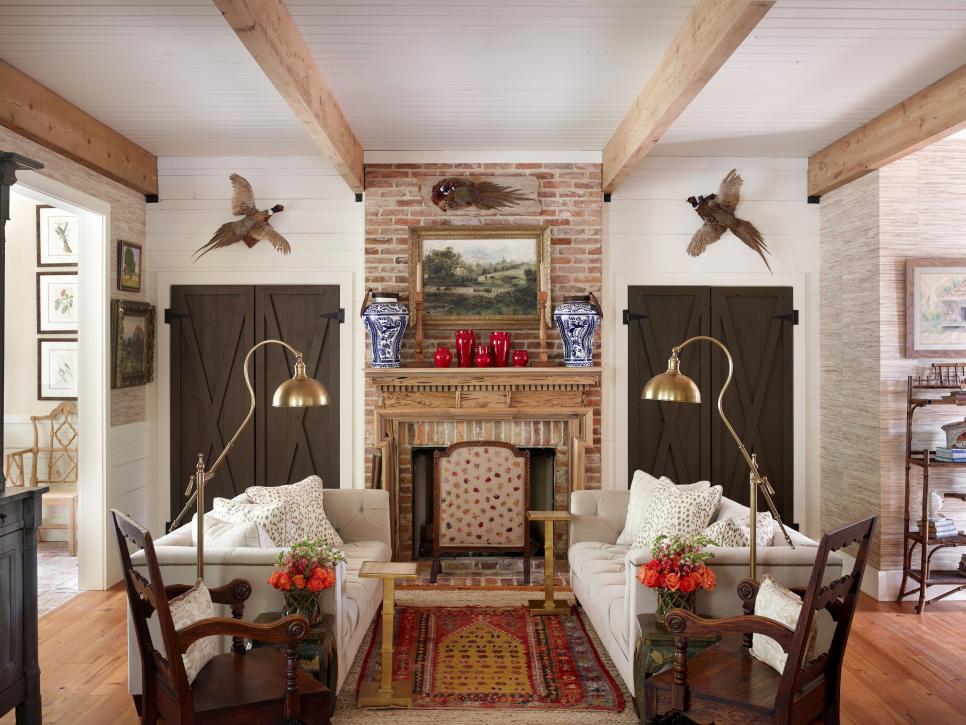
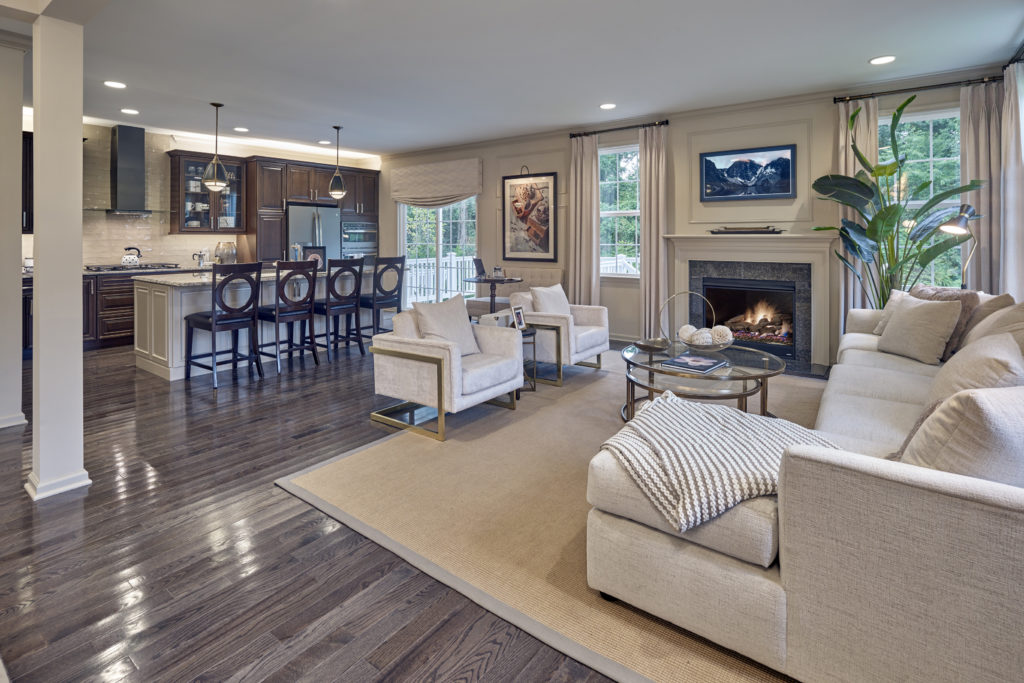



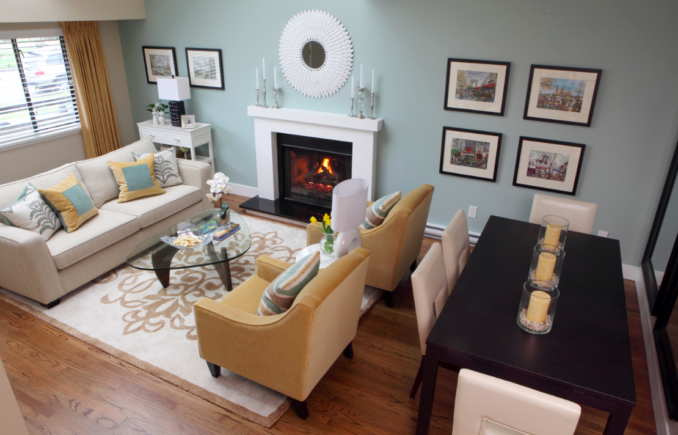







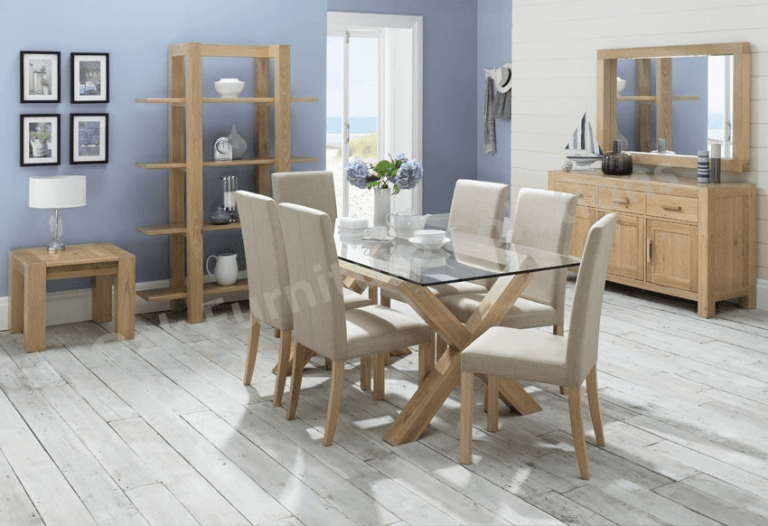

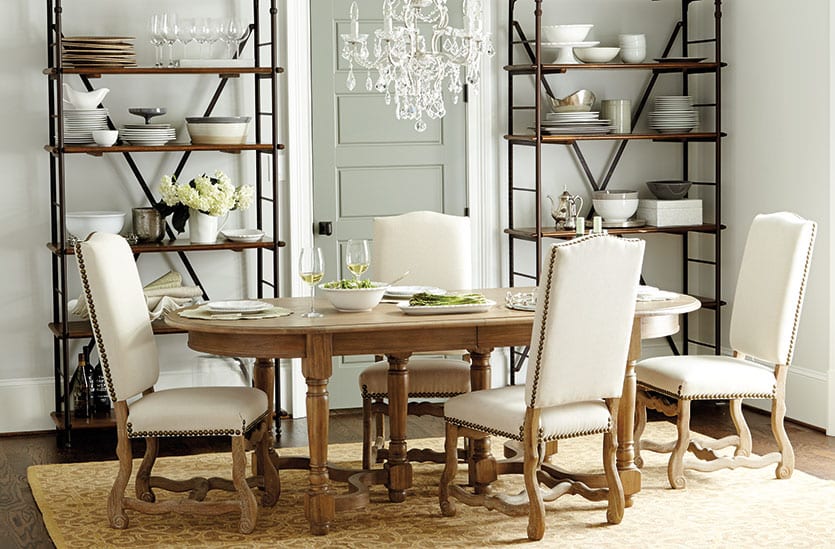
/dining-room-table-decor-ideas-21-mindy-gayer-marigold-project-6a8c8379f8c94eb785747e3305803588.jpg)



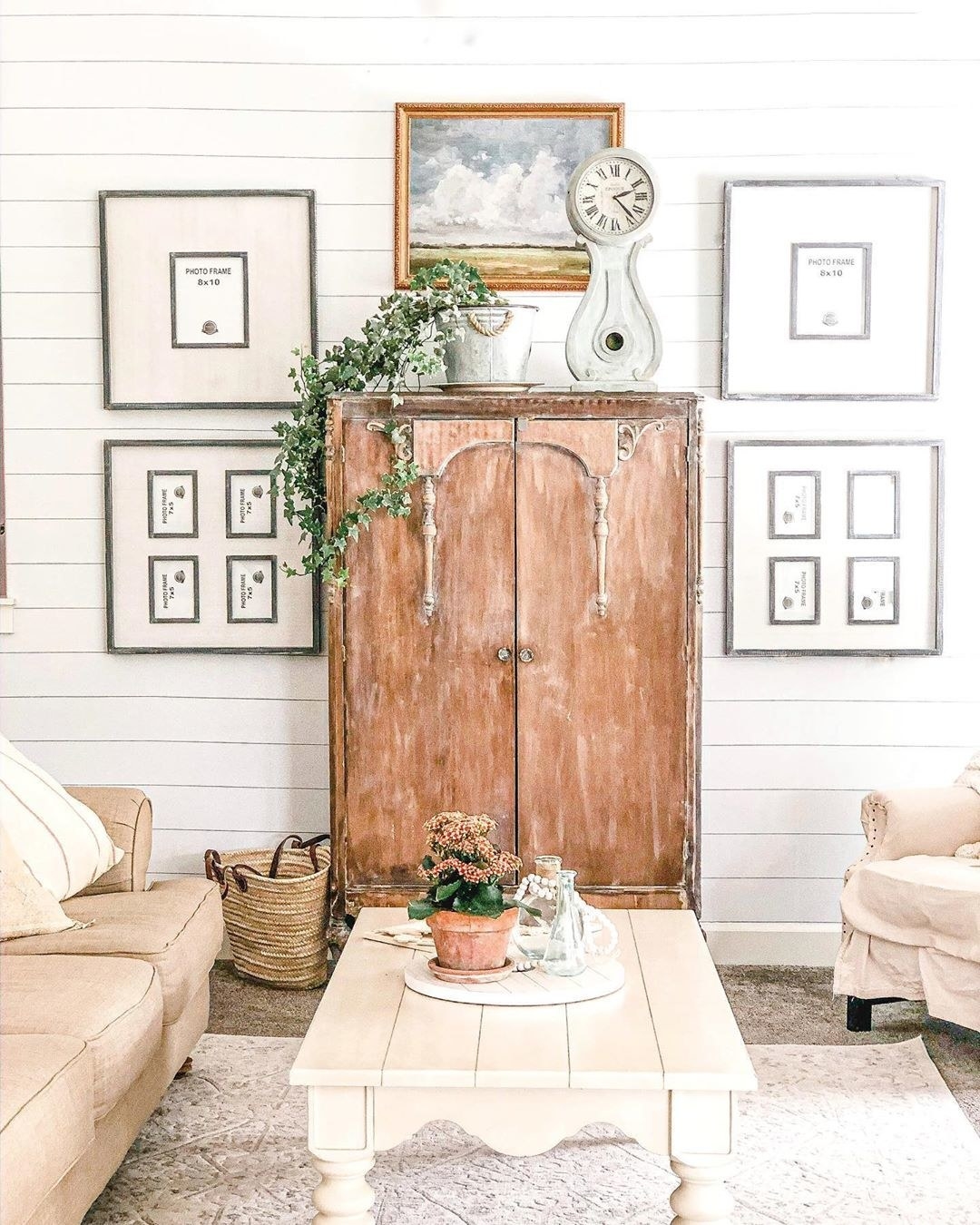




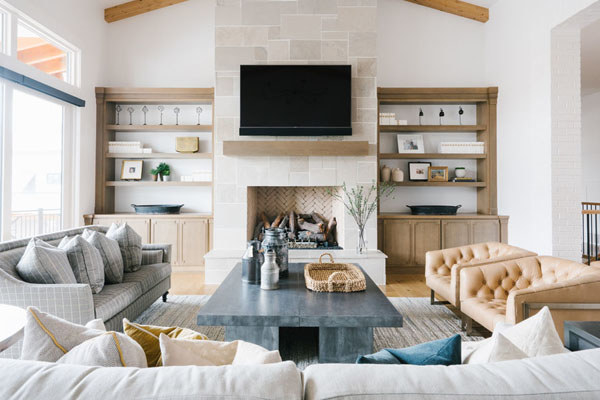
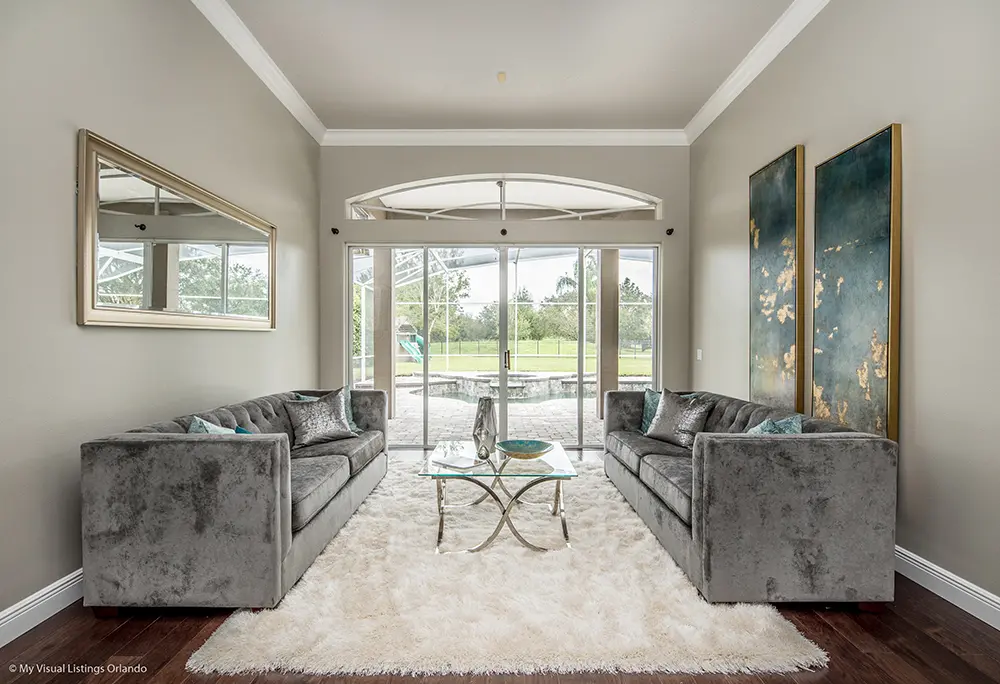
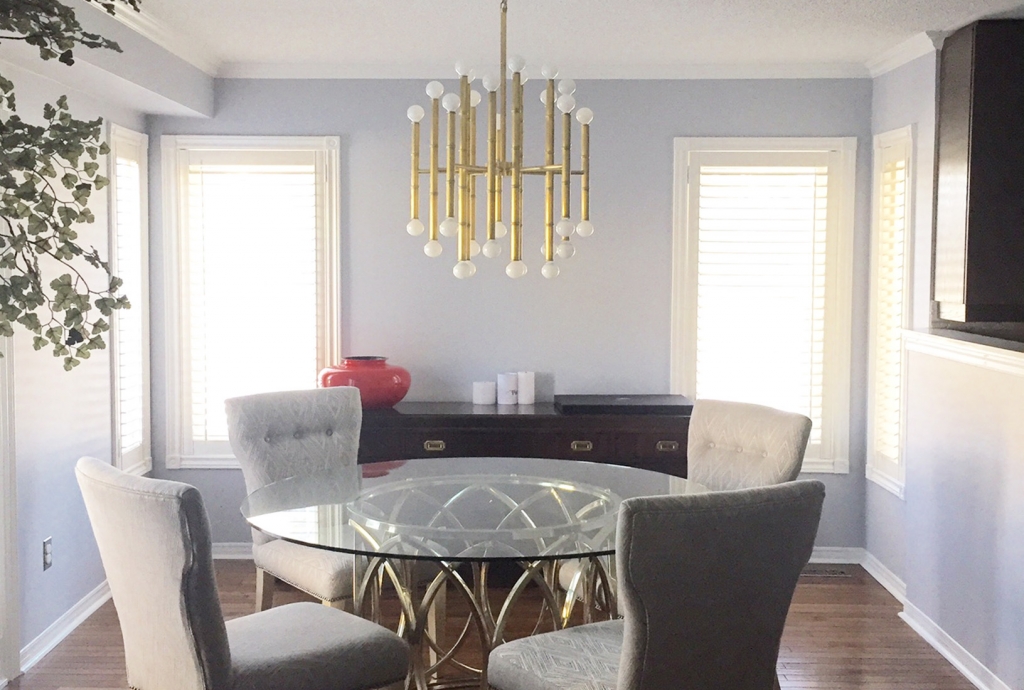
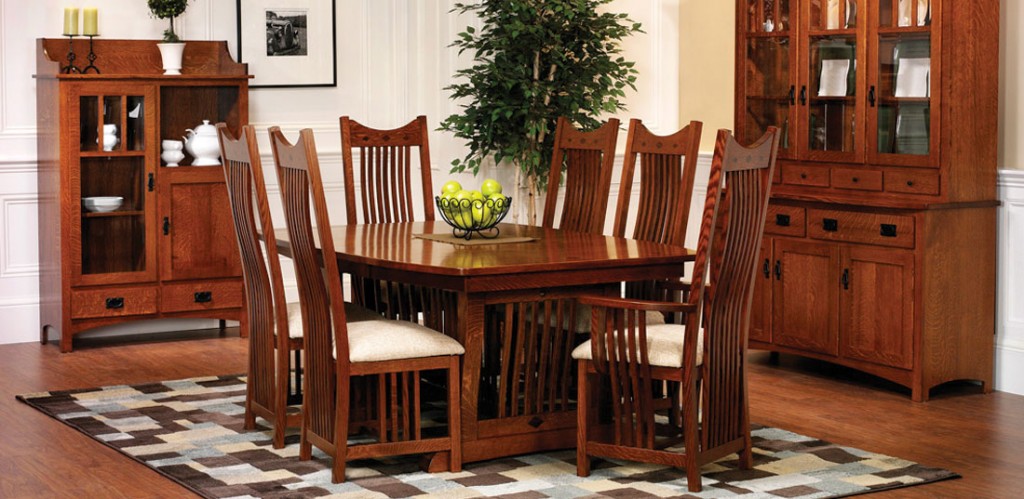
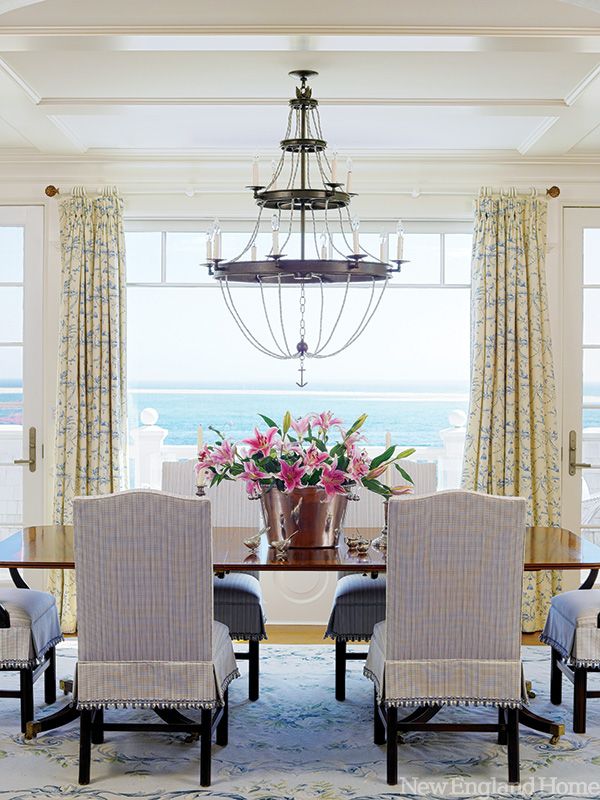

/balanced-furniture-58a71e573df78c345b8901f7.jpg)

